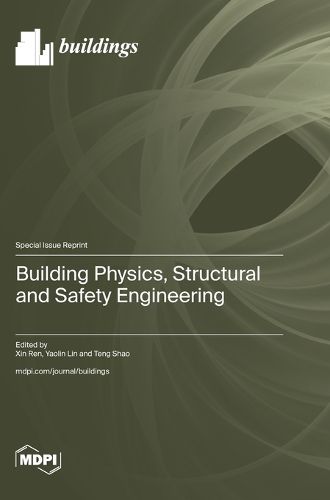Readings Newsletter
Become a Readings Member to make your shopping experience even easier.
Sign in or sign up for free!
You’re not far away from qualifying for FREE standard shipping within Australia
You’ve qualified for FREE standard shipping within Australia
The cart is loading…






This title is printed to order. This book may have been self-published. If so, we cannot guarantee the quality of the content. In the main most books will have gone through the editing process however some may not. We therefore suggest that you be aware of this before ordering this book. If in doubt check either the author or publisher’s details as we are unable to accept any returns unless they are faulty. Please contact us if you have any questions.
The subjects of building physics, and structural and safety engineering have always been popular research topics globally for scientists across many fields, including, but not limited to, architecture, civil engineering, and safety engineering. In recent years, considerable scientific progress has been achieved regarding the related research themes. This Special Issue is dedicated to recent advances in the design, theoretical, numerical, and experimental study of building physics, structural, and safety engineering, including building systems and materials; energy and environment; green building and architecture; structural engineering; disaster prevention and mitigation projects; smart materials and structures; constructions and composites; structural health monitoring; civil engineering; and architecture. For this event, all these topics were covered in the extensive submissions accepted, but interesting papers on other aspects of building structure were also received. In this reprint, the main research findings of the accepted papers in this Special Issue, including fired control, building insulation, wind comfort, hygrothermal performance, in situ structural evaluation, concrete production, piled raft foundations performance evaluation, wall piers, and pipe heat transfer, are summarized, and a number of research questions and directions are identified.
$9.00 standard shipping within Australia
FREE standard shipping within Australia for orders over $100.00
Express & International shipping calculated at checkout
This title is printed to order. This book may have been self-published. If so, we cannot guarantee the quality of the content. In the main most books will have gone through the editing process however some may not. We therefore suggest that you be aware of this before ordering this book. If in doubt check either the author or publisher’s details as we are unable to accept any returns unless they are faulty. Please contact us if you have any questions.
The subjects of building physics, and structural and safety engineering have always been popular research topics globally for scientists across many fields, including, but not limited to, architecture, civil engineering, and safety engineering. In recent years, considerable scientific progress has been achieved regarding the related research themes. This Special Issue is dedicated to recent advances in the design, theoretical, numerical, and experimental study of building physics, structural, and safety engineering, including building systems and materials; energy and environment; green building and architecture; structural engineering; disaster prevention and mitigation projects; smart materials and structures; constructions and composites; structural health monitoring; civil engineering; and architecture. For this event, all these topics were covered in the extensive submissions accepted, but interesting papers on other aspects of building structure were also received. In this reprint, the main research findings of the accepted papers in this Special Issue, including fired control, building insulation, wind comfort, hygrothermal performance, in situ structural evaluation, concrete production, piled raft foundations performance evaluation, wall piers, and pipe heat transfer, are summarized, and a number of research questions and directions are identified.